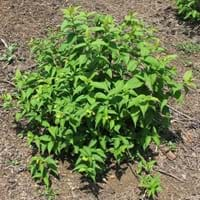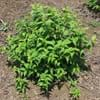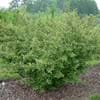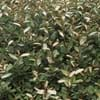Life Span
Annual and Perennial
Perennial
Type
Shrub
Bulb or Corm or Tuber
Origin
North America, United States, Northeastern United States, Mid-Atlantic United States, Southeastern United States, North-Central United States, Canada
South America, Argentina
Types
Diervilla sessilifolia, Diervilla rivularis
Not Available
Habitat
Forests, Prairies, Roadsides, Wet lands, Woodlands
Temperate Regions
USDA Hardiness Zone
3-7
5-9
Sunset Zone
A2, A3, 1a, 1b, 2a, 2b, 3a, 3b, 4, 5, 6, 7, 8, 9
21,22
Habit
Cushion/Mound-forming
Clump-Forming
Flower Color
Yellow, Orange, Light Yellow, Yellow green
Light Blue, Light Purple, Silver, Sky Blue
Flower Color Modifier
Not Available
Bicolor
Fruit Color
Red
Not Available
Leaf Color in Spring
Light Green, Bronze
Green, Light Green, Gray Green
Leaf Color in Summer
Dark Green, Bronze
Light Green
Leaf Color in Fall
Yellow, Red, Bronze
Several shades of Green
Leaf Color in Winter
Not Available
Light Green
Leaf Shape
Pinnate
Grass like
Plant Season
Spring, Summer, Fall, Winter
Spring
Sunlight
Partial Sun, Partial shade
Full Sun, Partial Sun, Partial shade
Growth Rate
Medium
Medium
Type of Soil
Clay, Loam, Sand
Clay, Loam, Sand
The pH of Soil
Acidic, Neutral, Alkaline
Acidic, Neutral, Alkaline
Soil Drainage
Well drained
Well drained
Bloom Time
Summer
Early Spring, Spring, Late Winter
Tolerances
Drought
Drought
Where to Plant?
Ground, Pot
Container, Ground
How to Plant?
Cuttings
By dividing rhizomes, tubers
Plant Maintenance
Medium
Medium
Watering Requirements
Average Water Needs, Medium
Average Water Needs, Do Not over Water, Requires regular watering
In Summer
Lots of watering
Lots of watering
In Spring
Moderate
Moderate
In Winter
Average Water
Average Water
Soil pH
Acidic, Neutral, Alkaline
Acidic, Neutral, Alkaline
Soil Type
Clay, Loam, Sand
Clay, Loam, Sand
Soil Drainage Capacity
Well drained
Well drained
Sun Exposure
Partial Sun, Partial shade
Full Sun, Partial Sun, Partial shade
Pruning
Prune in early spring, Remove damaged leaves, Remove dead branches, Remove dead leaves, Remove dead or diseased plant parts, Remove shoots
Remove damaged leaves, Remove dead branches, Remove dead leaves
Fertilizers
10-10-10
All-Purpose Liquid Fertilizer
Pests and Diseases
Red blotch
Slugs, Snails
Plant Tolerance
Drought
Drought
Flower Petal Number
Single
Single
Foliage Texture
Medium
Medium
Foliage Sheen
Matte
Matte
Attracts
Birds, Butterflies, Hummingbirds, Not Available
Bees, Birds, Hummingbirds
Allergy
Avoid during Pregnancy, Poisonous, Toxic
Not Available
Aesthetic Uses
Showy Purposes
Showy Purposes
Beauty Benefits
Good for skin
Not Available
Edible Uses
Insignificant
No
Environmental Uses
Air purification, soil stabilisation
Air purification
Medicinal Uses
Diuretic, Galactogogue, Laxative, Opthalmic
No Medicinal Use
Part of Plant Used
Bark, Leaves
Flowers
Other Uses
Used for its medicinal properties
Not Available
Used As Indoor Plant
Yes
Yes
Used As Outdoor Plant
Yes
Yes
Garden Design
Container, Foundation, Groundcover, Mixed Border, Rock Garden, Wall
Container, Lawns and Turf, Mixed Border, Rock Garden / Wall, Wildflower
Botanical Name
DIERVILLA lonicera
Ipheion uniflorum
Common Name
Northern bush honeysuckle, Low bush honeysuckle, Dwarf bush honeysuckle, Yellow-flowered upright honeysuckle
Spring Starflower, Springstar
In Hindi
Bush Honeysuckle
Plant
Spring Starflower
In German
Bush Honeysuckle
Pflanze
Frühling Borretsch
In French
Bush Honeysuckle
Plante
Spring Starflower
In Spanish
Bush madreselva
Planta
primavera Flor de estrella
In Greek
Μπους Αγιόκλημα
Φυτό
άνοιξη starflower
In Portuguese
Bush, Honeysuckle
Plantar
primavera Starflower
In Polish
Bush Honeysuckle
Roślina
Wiosna Starflower
In Latin
CISSANTHEMOS Bush
planta
Spring Starflower
Phylum
Magnoliophyta
Magnoliophyta
Class
Magnoliopsida
Lilopsida
Order
Dipsacales
Asparagales
Family
Caprifoliaceae
Liliaceae
Clade
Angiosperms, Asterids, Eudicots
Angiosperms, Monocots
Tribe
Diervilleae
Gilliesieae
Subfamily
Not Available
Allioideae
Number of Species
Not Available
Not Available
Season and Care of Bush Honeysuckle and Spring Starflower
Season and care of Bush Honeysuckle and Spring Starflower is important to know. While considering everything about Bush Honeysuckle and Spring Starflower Care, growing season is an essential factor. Bush Honeysuckle season is Spring, Summer, Fall and Winter and Spring Starflower season is Spring, Summer, Fall and Winter. The type of soil for Bush Honeysuckle is Clay, Loam, Sand and for Spring Starflower is Clay, Loam, Sand while the PH of soil for Bush Honeysuckle is Acidic, Neutral, Alkaline and for Spring Starflower is Acidic, Neutral, Alkaline.
Bush Honeysuckle and Spring Starflower Physical Information
Bush Honeysuckle and Spring Starflower physical information is very important for comparison. Bush Honeysuckle height is 10.16 cm and width 10.16 cm whereas Spring Starflower height is 10.20 cm and width 5.10 cm. The color specification of Bush Honeysuckle and Spring Starflower are as follows:
Bush Honeysuckle flower color: Yellow, Orange, Light Yellow and Yellow green
Bush Honeysuckle leaf color: Light Green and Bronze
Spring Starflower flower color: Light Blue, Light Purple, Silver and Sky Blue
- Spring Starflower leaf color: Green, Light Green and Gray Green
Care of Bush Honeysuckle and Spring Starflower
Care of Bush Honeysuckle and Spring Starflower include pruning, fertilizers, watering etc. Bush Honeysuckle pruning is done Prune in early spring, Remove damaged leaves, Remove dead branches, Remove dead leaves, Remove dead or diseased plant parts and Remove shoots and Spring Starflower pruning is done Remove damaged leaves, Remove dead branches and Remove dead leaves. In summer Bush Honeysuckle needs Lots of watering and in winter, it needs Average Water. Whereas, in summer Spring Starflower needs Lots of watering and in winter, it needs Average Water.





